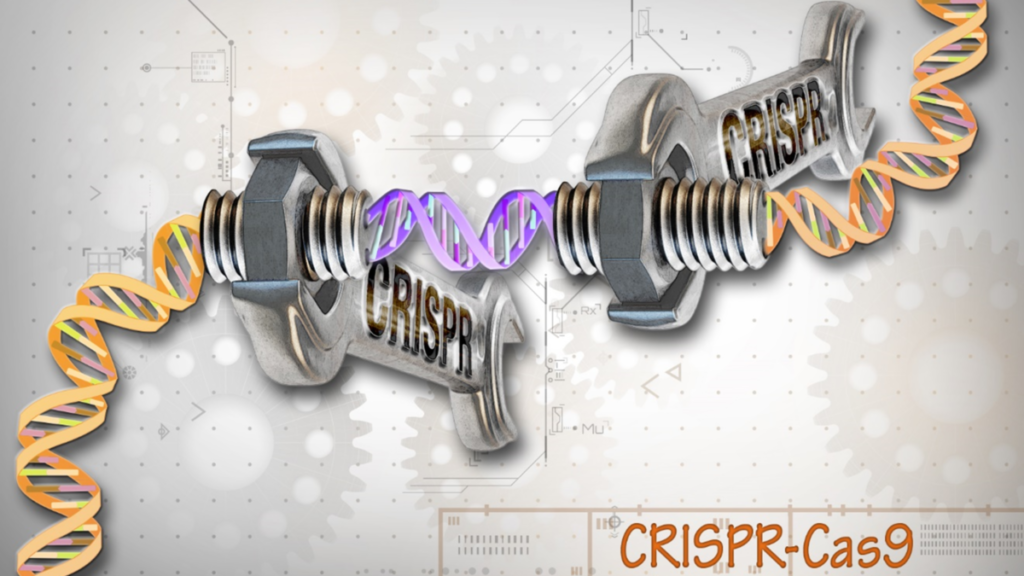Expanding upon the CRISPR-Cas9 gene editing system, researchers at MIT have designed a new technique called PASTE gene editing that can cut out defective genes and replace them with new genes in a safer and more efficient way.
Developed by MIT researchers Jonathan Gootenberg and Omar Abudayyeh, PASTE (Programmable Addition via Site-specific Targeting Elements) gene editing technology can insert genes as long as 36,000 DNA base pairs to liver cells in mice as well as several types of human cells.
“It’s a new genetic way of potentially targeting these really hard to treat diseases,” said Abudayyeh, a McGovern Fellow at MIT’s McGovern Institute for Brain Research, in MIT’s press release. “We wanted to work toward what gene therapy was supposed to do at its original inception, which is to replace genes, not just correct individual mutations.”
The PASTE gene editing technique was recently published in Nature Biotechnology. The lead authors of the new study are MIT technical associates Matthew Yarnall and Rohan Krajeski, MIT graduate student Cian Schmitt-Ulms and former MIT graduate student Eleonora Ioannidi. Gootenberg and Abudayyeh are the senior authors of the study.
XTALKS WEBINAR: Why Use Humanized Mouse Models for Translational Studies in Inflammatory Disorders?
Live and On-Demand: Tuesday, January 24, 2023, at 11am EST (4pm GMT/UK)
Register for this free webinar to learn about the importance of using humanized mouse models for translational studies in inflammatory disorders.
How does the Gene Editing Tool PASTE Work?
The CRISPR-Cas9 gene editing system uses a programmable single guide RNA sequence (sgRNA) to find and bind to specific regions of DNA and the Cas9 nuclease induces double strand breaks at these target regions of the genome. Gene editing can then occur by inserting an exogenous DNA strand or by removing specified sections of the target gene. However, double-stranded breaks in DNA can cause chromosomal deletions or rearrangements that are deleterious to cells.
The objective of Abudayyeh and Gootenberg’s research was to develop a gene editing tool that can facilitate the splicing and replacement of a defective gene sequence without double-stranded breaks in DNA.
The MIT research team turned to a family of enzymes called integrases to meet their goal. Integrases are used by viruses called bacteriophages to insert their genetic material into bacteria. Serine integrases were used by the researchers as these specific integrases can insert very large pieces of DNA as long as 50,000 base pairs. Serine integrases can also bind to and integrate the DNA load at specific DNA sequences known as attachment sites (also called landing pads).
Previously, scientists have found it difficult to apply integrases for human therapy because the landing pads are very specific, and it is challenging to direct integrases to land at other DNA sites. The team at MIT found that using serine integrases with a CRISPR-Cas9 system that inserts the right landing site would allow for straightforward reprogramming of the insertion system.
Hence the PASTE technique uses the combined effort of CRISPR-Cas9 and the integrase enzyme system. An RNA strand guides Cas9 to cut at a particular genomic site and insert the landing site, which is 46 DNA base pairs. This insertion of the landing site is done without causing any double-stranded breaks in the DNA as one DNA strand is added first using a fused reverse transcriptase, then its complementary strand is built. When the landing site is incorporated, the integrase can insert the larger DNA payload into the genome at that site.
PASTE technology has proven its efficacy by successfully transferring a DNA fragment that is approximately 36,000 base pairs long without using double-stranded breaks in DNA.
The researchers used PASTE to insert genes into several types of human cells, including T cells, liver cells and lymphoblasts. The MIT scientists tested the technique with 13 different payload genes, including gene sequences that could be therapeutically useful, and could insert the long DNA chunks into nine different locations in the genome with a success rate from five to 60 percent. The researchers reported very few unwanted deletions or insertions at the sites of gene integration.
Using the PASTE technique, the researchers were also able to insert genes into humanized livers in mice with around 70 percent human hepatocytes. They could successfully insert genes into approximately 2.5 percent of these cells.
“Just like CRISPR, these integrases come from the ongoing battle between bacteria and the viruses that infect them,” said Jonathan Gootenberg, also a McGovern Fellow. “It speaks to how we can keep finding an abundance of interesting and useful new tools from these natural systems.”
The Future of PASTE
The researchers at MIT are currently investigating if PASTE technology can be used to replace the defective cystic fibrosis gene.
PASTE may also be a promising tool for treating numerous genetic disorders, such as hemophilia, G6PD deficiency or Huntington’s disease.
The researchers have also made their genetic constructs available online for any research lab to use.












Join or login to leave a comment
JOIN LOGIN